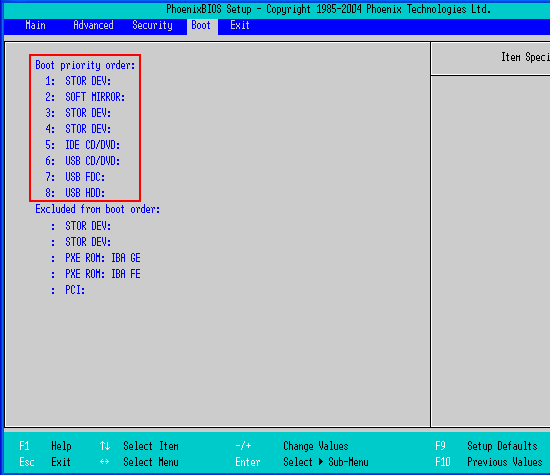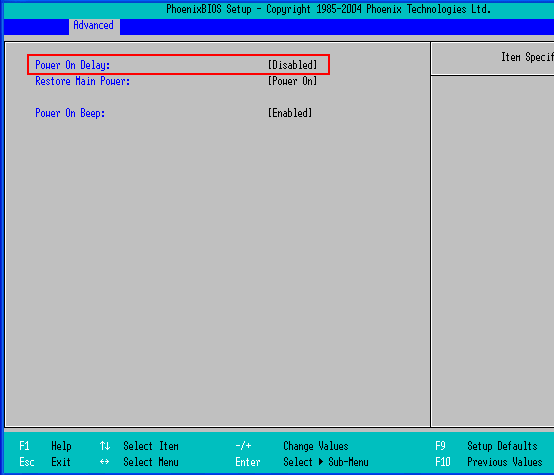|
Refer to the followings to see
the major causes of abnormal operations and instructions for
recovery.
|
|
|
| ■
Nothing is displayed on the
screen. |
|
|
|
- Is the
power cable properly connected? |
|
|
The power supply unit may break down if the power is
improperly connected. Confirm the proper connection referring
to the hardware manual and installation guide. In addition,
also make sure that the power switch* is on.
(*
Some models do not have a power switch.)
|
|
- Are the
values of the power supply and voltage within the range of the
specifications? |
|
|
If the values of the power supply or voltage exceeds the
range of the specifications, the unit cannot be powered on.
Keep in mind that, if the unit is once plugged into the wrong
voltage and then even replugged into the proper voltage, it
may not properly operate.
|
|
- Is the
backlight on? |
|
|
Even if the proper power is supplied,
nothing may be displayed on screen, such as because the
backlight is off due to an error. If you can see the backlight
is off, the backlight should be replaced with a new one*.
(* The
backlights in some models cannot be replaced by users.) |
|
- Is the status
LED on? |
|
|
Check the status LED on the front
panel when nothing is displayed on screen even though the
proper power is supplied.

|
|
|
| ■ The
screen works fine, but the OS doesn't
run. |
|
|
|
- The
unit doesn't start displaying the message "CMOS CHECKSUM
ERROR."
|
|
|
It may be caused by a weak CMOS
battery. Please replace it with a new one. Reconfiguration is
required after the replacement because the BIOS settings are
cancelled when the battery is removed.

|
|
- A blue
screen error occurs while the Windows starts up.
|
|
|
Please refer to the following
Q&A.
The Blue
Screen of Death displays while Windows is operating.
|
|
- Have you made additional
connections to USB memories or HDDs which are
not target disks for boot.
|
|
|
If the connections to USB memories or
HDDs which are not the target disks for boot are added, and if
these devices are placed as a high priority in the "Boot
priority order" list, the unit may not properly start. When
you make the additional connections, please make sure the
priority order of the "Boot priority order" list.

 |
|
|
(The above is the image of the
Phoenix BIOS screen in the PL3000 series.)
(The image
differs depending on models.) |
|
|
| ■ The
connected device doesn't properly work. |
|
|
|
- Is the
device properly connected?
|
|
|
Please refer to the manuals of the
device. |
|
- Does
the device require driver settings?
|
|
|
Please properly make the appropriate
driver settings referring to the manuals of the device.
|
|
- Is the
unit starting up with a USB device connected?
|
|
|
If the unit starts up with a USB
device such as USB memory connected, the following events may
occur depending on the device. |
| - |
It takes approximately one minute until the OS
starts running. |
| - |
The USB device cannot be recognized.
|
If either of the events above occurs,
please follow the below instruction.
From the
[Advanced] menu in the BIOS Setup screen, move the cursor to
[Power-ON Configuration] and then press the [Enter] key to
display the screen as shown below. If [Enabled] is selected in
[Power on Delay] on this screen, the problem may be solved.

 |
(The above is the image of the
Phoenix BIOS screen in the PL3000 series.)
(The image
differs depending on models.)
|
| MEMO |
| Power On
Delay |
| |
[Enabled]
--- Hold a wait state for about 4 seconds until
the unit starts up. |
| |
[Disabled]
--- The unit starts up in a normal state (with the
factory default settings). |
| If the
connected CD/DVD drive is not recognized, change
the setting to [Enabled] and then check the
operation.
| | |
|
|



 沪ICP备05028659号-3
沪ICP备05028659号-3


 沪ICP备05028659号-3
沪ICP备05028659号-3